-
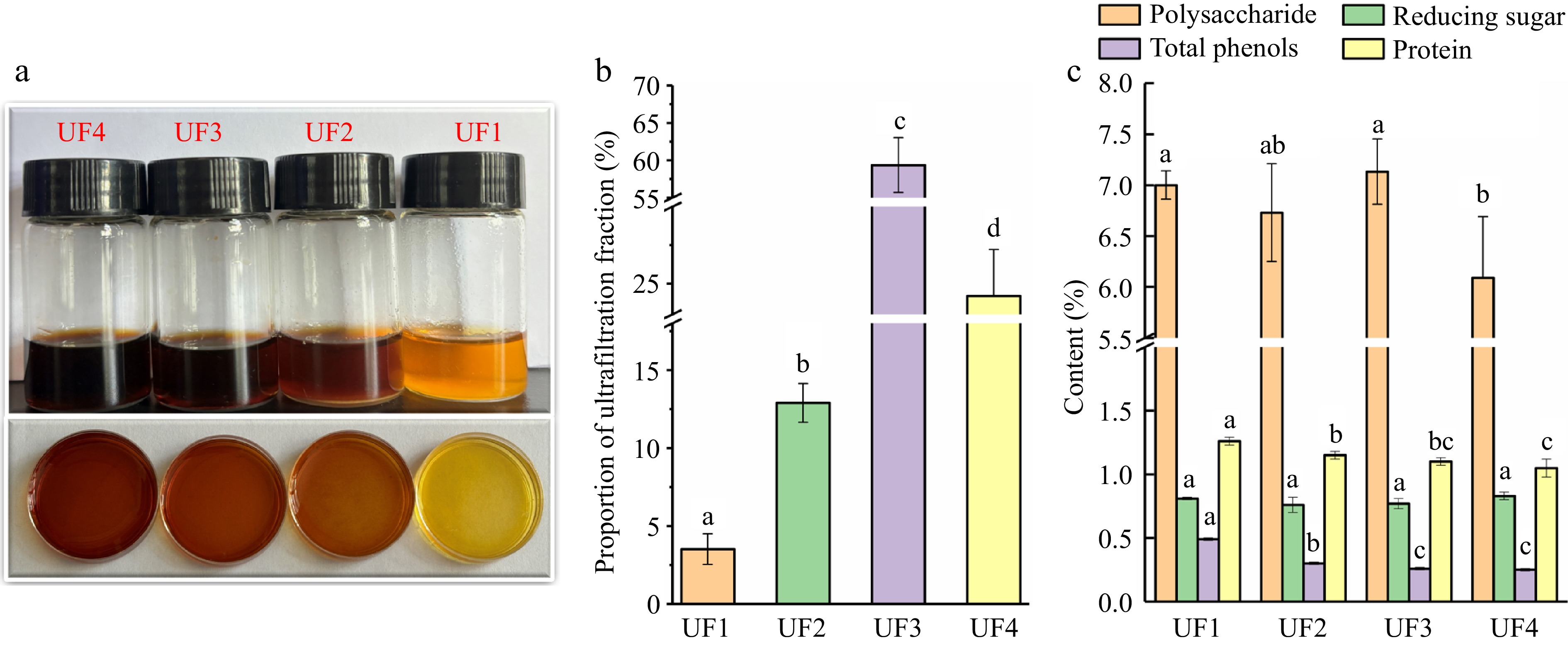
Figure 1.
The physicochemical properties of melanoidin fractions with different MW extracted from induced black Lycium bararum L., including (a) color, (b) proportion of ultrafiltration fraction, and (c) chemical composition. UF1 (Ultrafiltration fraction 1, MWC > 50 kDa), UF2 (10 kDa < MWC < 50 kDa), UF3 (3 kDa < MWC < 10 kDa) and UF4 (< 3 kDa).
-
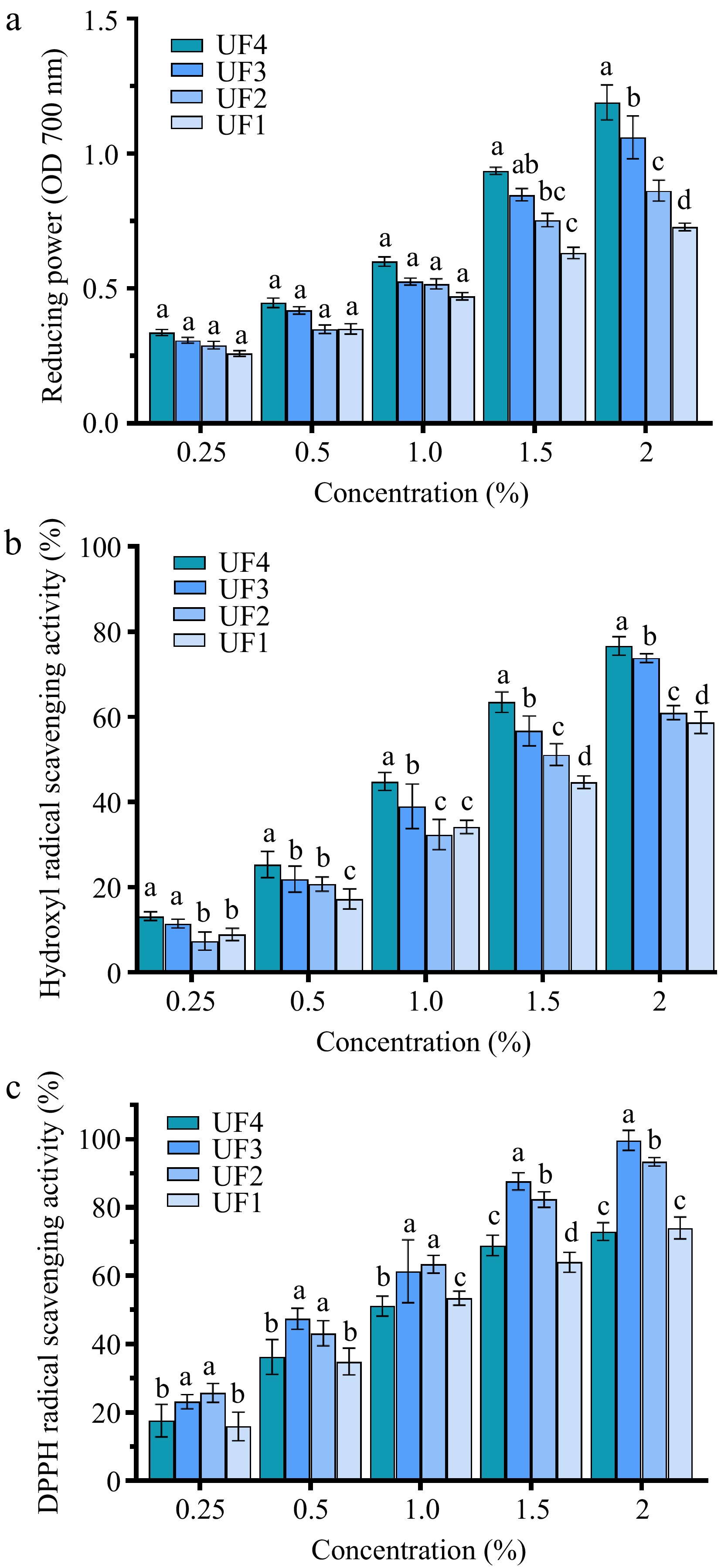
Figure 2.
The antioxidant activities of melanoidin fractions with different MW, including (a) reducing power, (b) hydroxyl radical scavenging activity, and (c) DPPH radical scavenging activity.
-
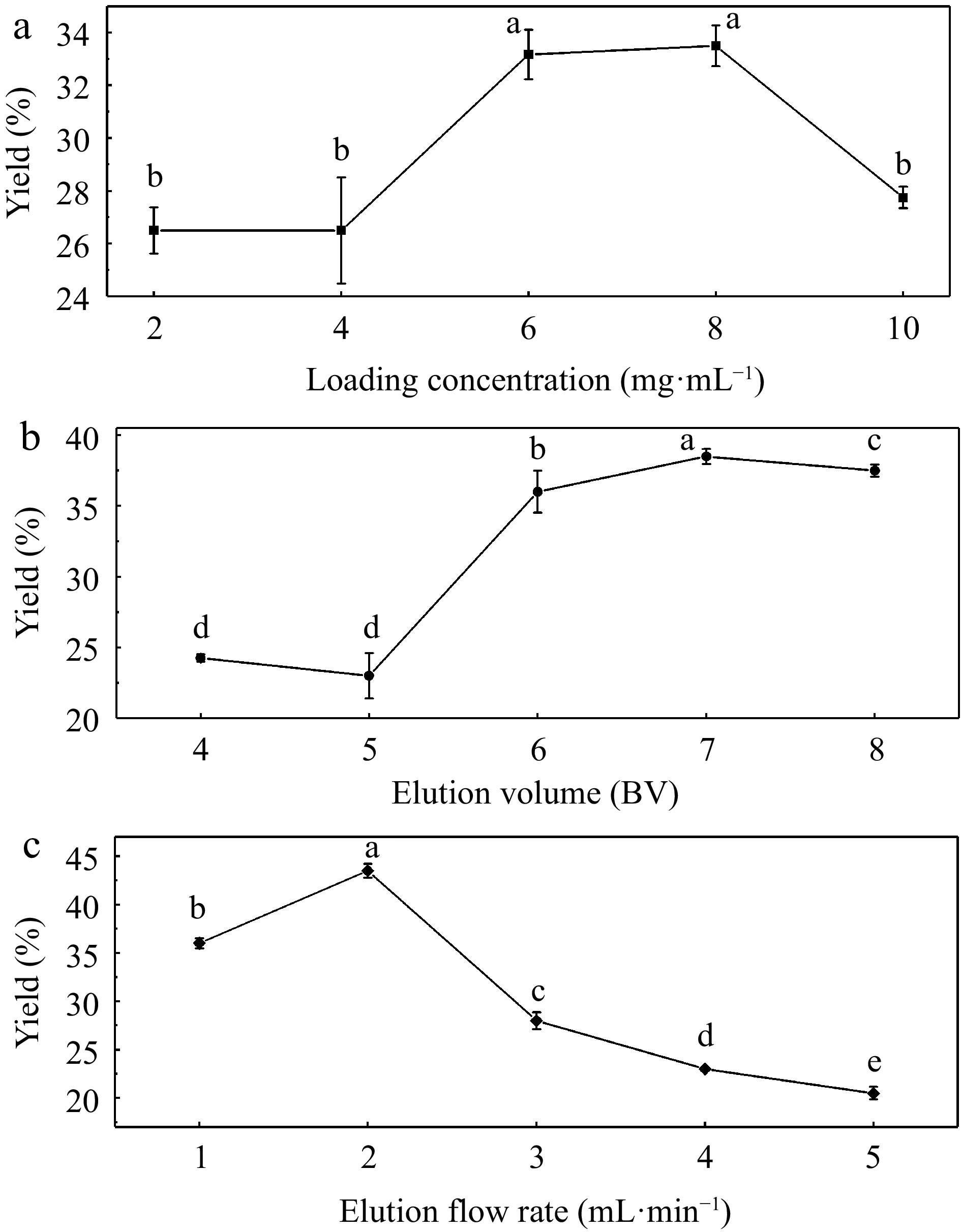
Figure 3.
Impact of (a) loading concentration, (b) elution volume, and (c) elution flow rate on the purification yields.
-
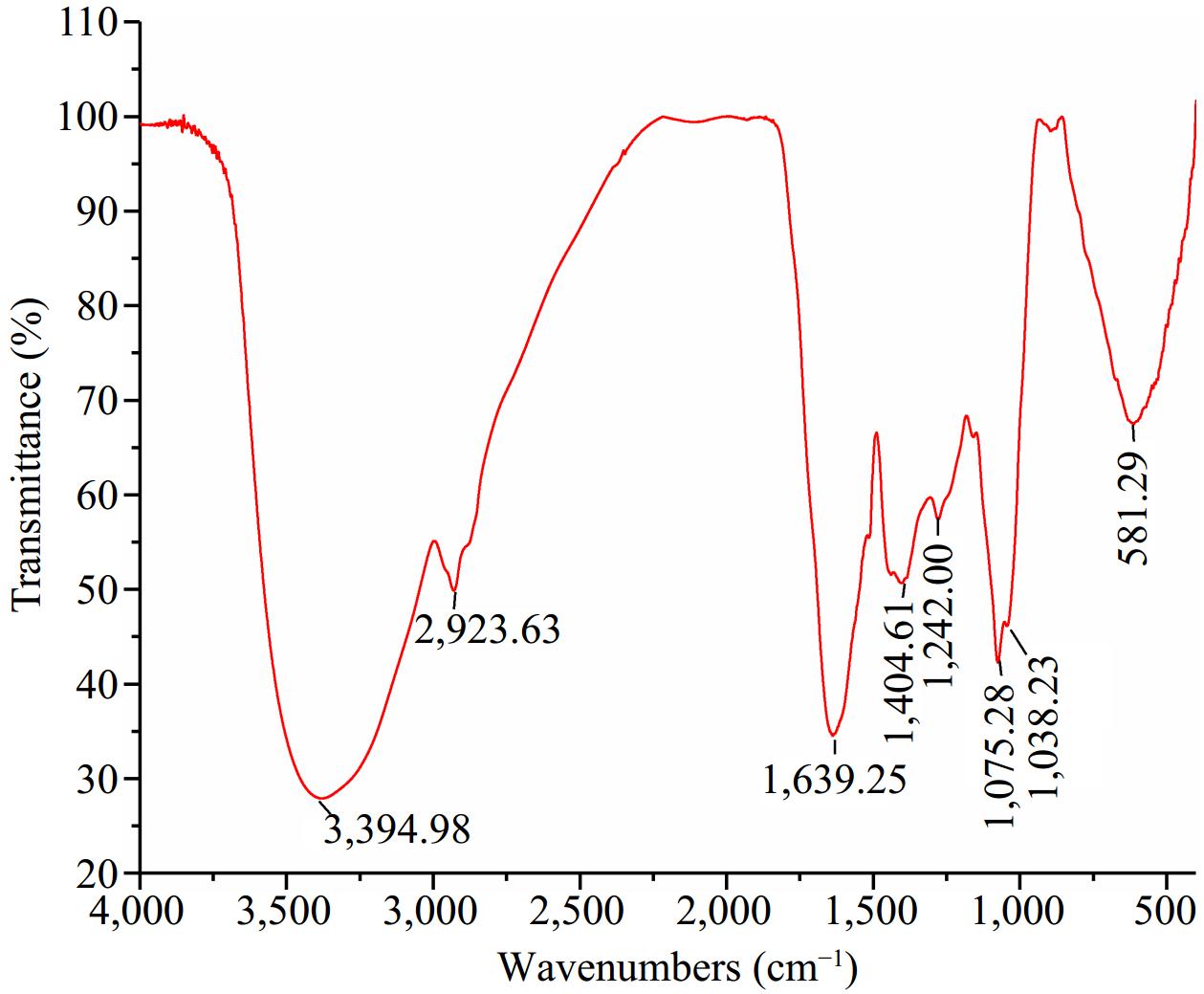
Figure 4.
FT-IR spectra of purified UF3.
-
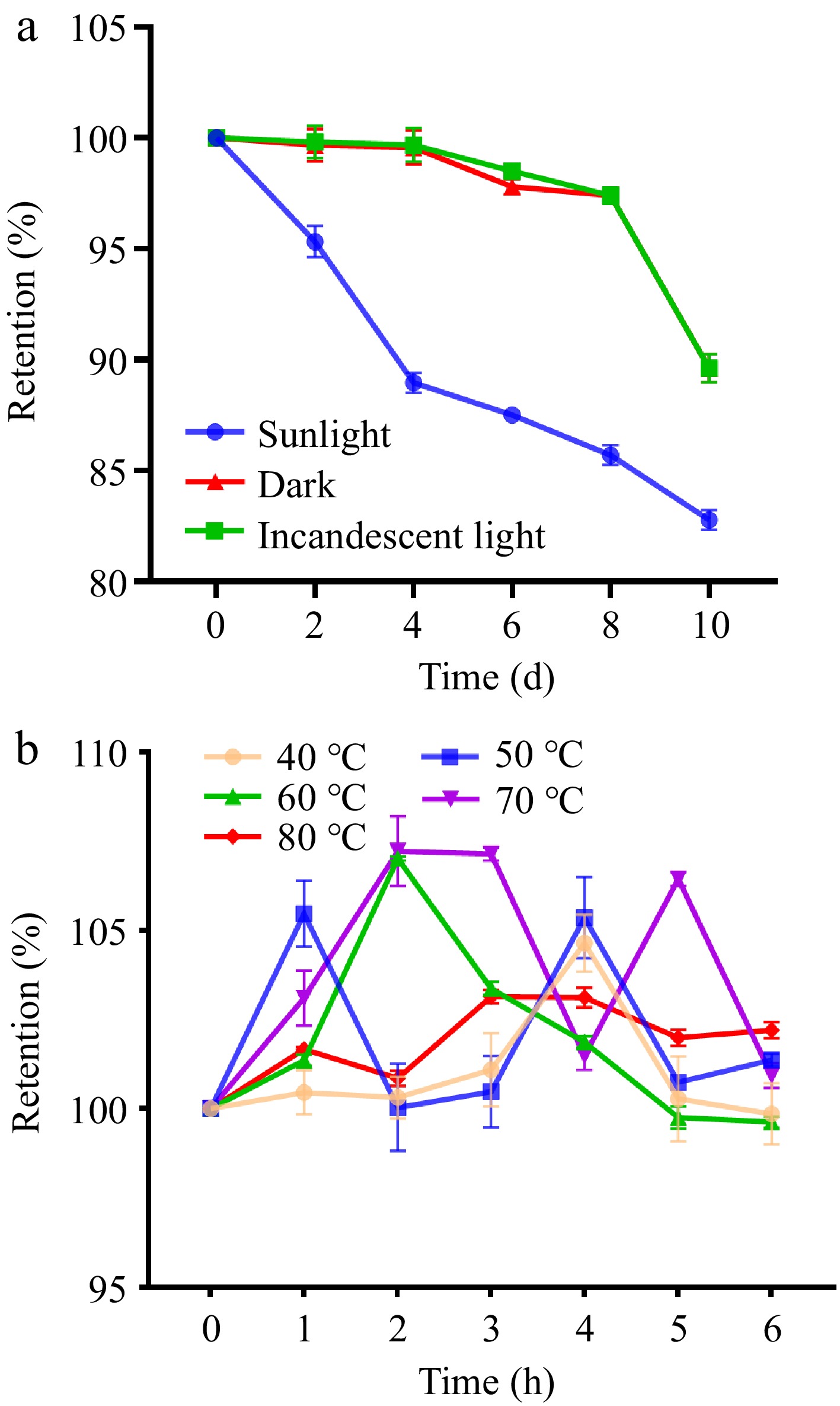
Figure 5.
Stability results of purified UF3 under (a) different light conditions, and (b) different temperatures.
-
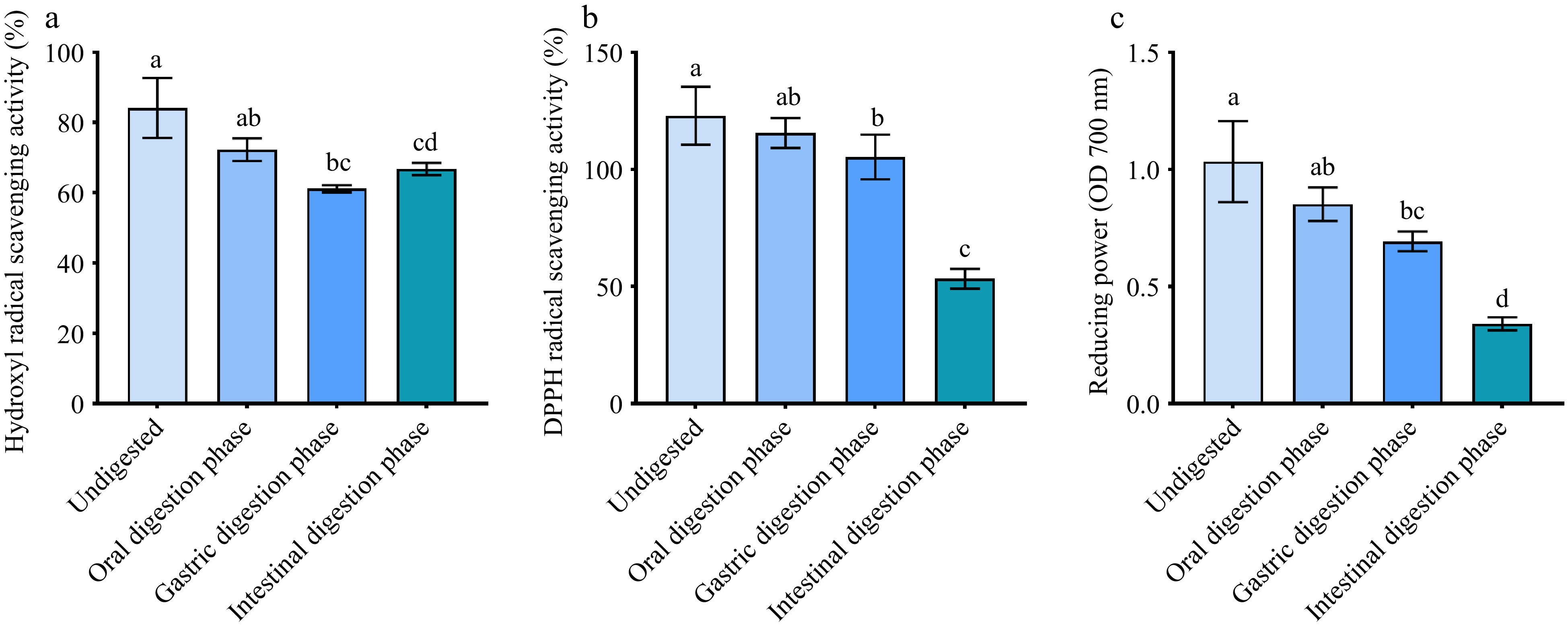
Figure 6.
The changes on antioxidant activities of purified UF3 in vitro digestion. (a) Hydroxyl radical scavenging activity, (b) DPPH scavenging activity, and (c) reducing power. Different letters indicate significant difference at p < 0.05.
-
Number Factors Results a: Loading concentration (mg·mL−1) b: Elution volume (BV) c: Elution flow rate (mL·min−1) Yield (%) 1 6 6 1 0.487 2 6 7 2 0.332 3 6 8 3 0.243 4 8 6 2 0.398 5 8 7 3 0.265 6 8 8 1 0.255 7 10 6 3 0.253 8 10 7 1 0.348 9 10 8 2 0.273 k1 0.351 0.376 0.360 k2 0.306 0.315 0.334 k3 0.291 0.257 0.253 R 0.0594 0.119 0.107 Order of importance b > c > a Optimal level a1b1c1 Table 1.
Analysis and results of orthogonal L9 (33) experimental design.
Figures
(6)
Tables
(1)